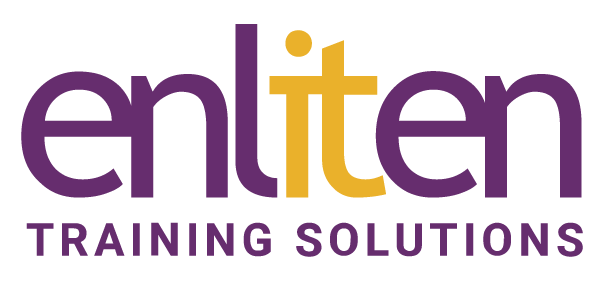This Oracle 19c Administration course is designed to give the Oracle database administrator practical experience in administering, monitoring, tuning and troubleshooting an Oracle database. A database administrator will gain an understanding of the architecture and processes of the Oracle database server. Delegates will learn how to ensure the integrity and availability of data and will also learn how to monitor the performance of a database, allocate resources with the Resource Manager and schedule jobs with the Oracle Job scheduler.
Delegate will practice:
- Administering an Oracle Database Instance
- Monitoring an Oracle Database
- Configuring the Oracle Network Environment
- Creating and Managing Database Storage Structures
- Managing Users, Profiles, Privileges and Roles
- Managing Undo Data and Temporary Segments
- Monitoring and Resolving Lock Conflicts
- Maintaining Database Security
- Implementing Database Auditing
- Monitoring the Performance of the Database
- Loading and Unloading Data
- Using the Job Scheduler
- Configuring a Database for Backup and Recovery
What will you learn?
How to administer an Oracle 19c database proficiently.
Audience?
This Oracle Database 19c Administration course is for anyone who needs to administer, monitor and support an Oracle database.
Course Contents
Introduction to Oracle Database
- Overview of the Oracle database
- Overview of the Oracle Cloud
- Relational database concepts
- Database administration tasks
Oracle 18c Architecture
- Overview of the Oracle database architecture
- The Oracle database instance
- Oracle Database memory structures
- Process architecture and structures
- Server and client processes
- The Oracle database storage architecture
- Connect to the Oracle database instance
Administer a Database Instance
- Administrative tools available to a DBA
- Use SQL*Plus in Oracle to manage a database instance
- Use SQL Developer to manage a database instance
- Administer the database using Enterprise Manager (EM)
- Overview of the Enterprise Manager framework
- Access Enterprise Manager Database Express
- The Enterprise Manager Database Express Home Page
- Enterprise Manager Cloud Control
- Initialization parameter files
Configure the Network Environment
- Overview of network configuration
- Oracle Net Listener configuration and management
- Oracle Net naming methods
- Tools for configuring and managing the Oracle network
- Using the Net Configuration Assistant
- Configure client connections with Net Manager
- View listener configuration
- Start and stop the Oracle listener
- Use TNSPING to test Oracle Net connectivity
- Connect to the database
- Configure Net Services with Enterprise Manager
Storage Structures
- Overview of data storage
- The database block
- Overview of tablespaces and datafiles
- Use Enterprise Manager to view the storage structure of the database
- Create and alter tablespace commands
- Temporary tablespaces
- Create and manage datafiles
- Use OMF
- Drop tablespaces and datafiles
Manage Users
- Predefined database administration accounts
- User accounts
- Create a user account
- User authentication
- Change a user's password
- Manage a user account
- Drop a user account
- Monitor user information
- Terminate user sessions
- Create a Schema Only Account
Manage profiles and Resources
- Overview of user profiles
- Profile resource parameters
- Create profile command
- Manage passwords with profiles
- Control resource usage with profiles
- Maintain profiles
Manage Privileges
- Database access
- Oracle supplied roles
- System and object level privileges
- The grant and revoke commands
- Create, modify and drop roles
- Use predefined roles
Manage Profiles and Resources
- Overview of user profiles
- Profile resource parameters
- Create profile command
- Manage passwords with profiles
- Control resource usage with profiles
- Maintain profiles
database Auditing
- Overview of database security
- Overview of database auditing
- Security compliance
- Standard auditing
- Unified audit trail
- Separation of audit responsibilities with the AUDIT_ADMIN and AUDIT_VIEWER roles
- Configure the audit trail
- Specify audit options
Data Concurrancy and Lock Conflicts
- Levels of locking in Oracle
- Methods used to acquire locks
- Data concurrency
- Possible causes of contention
- DML locks
- Prevent locking problems
- Detect lock contention
- Resolve conflicts
Undo Management
- Undo data overview
- Monitor and administer undo
- Configure undo retention
- Switch undo tablespaces
- Specify the retention period
- Guarantee undo retention
- Retention period for flashback queries
- View undo space information
- Use the undo advisor
- Size the undo tablespace
- Alter an undo tablespace to a fixed size
Backup and Recovery Configuration
- Oracle backup solutions
- Oracle suggested backup strategy
- Overview of database backup, restore and recover
- Flashback technology
- Types of failure
- Instance recovery
- Tune instance recovery
- The MTTR Advisor
- Media failure
- Configure a database for recoverability
Proactive Database Maintenance
- Database Maintenance
- View the alert log
- The Automatic Workload Repository
- Statistic levels
- The Automatic Database Diagnostic Monitoring
- Monitor an Oracle database
- Use the Advisors
- Set up notification rules
Performance Management
- Tuning information sources
- Performance monitoring
- Tuning activities
- Performance planning
- Instance tuning
- Performance tuning methodology
- Performance tuning data
- Monitoring performance
- Managing memory
- Manage Private Temporary Tables
SQL Tuning
- SQL tuning
- Cancel a SQL Statement in a Session
- The Oracle Optimizer
- SQL Plan directives
- Adaptive execution plans
- SQL Advisors
- Automatic SQL Tuning results
- Implement automatic tuning recommendations
- SQL Tuning Advisor
Moving Data
- Create directory objects
- Data Pump architecture
- Data Pump data dictionary views
- Data Pump interactive mode
- Data Pump API
- Use Data Pump to export data
- Use Data Pump to import data
- Overview of SQL Loader
- Command line parameters
- Record filtering
- Control file keywords
- Datafiles
- SQL Loader data paths
- External Tables
Using Resource Manager
- Overview of the Database Resource Manager
- Use the Resource Manager
- Create Resource Plans
- The default maintenance resource manager plan
- Create Resource Plan Directives
- Allocate resources for Resource Plans
Automate Tasks with Scheduler
- Introduction to the Scheduler
- Access Rights
- Scheduler components and workflow
- Create a Job
- Job Classes
- Use time based, event based schedules
- Create an event based schedule
Manage Space & Oracle Support
- Overview of space management
- Block space management within segments
- Segment types
- Allocate extents
- Allocate space
- Row chaining and migration
- Create tables without segments
- The Enterprise Manager Support Workbench
- Register for security updates
- Work with Oracle Support
- My Oracle Support integration
- Log Service Requests
- Manage patches
- Apply a patch
Course Materials
Enliten IT will provide each delegate with a workbook and other useful reference materials where applicable.
Prerequisites
Delegates should have an understanding of relational database concepts and good operating system knowledge. They should have attended the Oracle SQL course or have a good working knowledge of Oracle SQL. The ability to describe and use Oracle built-in PL/SQL packages would be highly advantageous but is not essential.
This course is run on a Linux operating system, a basic knowledge of Linux/UNIX is recommended but is not essential.
Additional Information
Enliten IT reserves the right to modify course content and materials as required in the interests of continuous course improvement, at any time, without notification.
The suggested course duration is a guideline. Course topics and duration may be modified by the instructor based upon the knowledge and skill level of the course participants.
Note: This Oracle 19c Administration course is run on a public schedule or can be taken as a private in-house company course UK wide. For pricing and availability just pick up the phone and call us on 0845 1085481.





